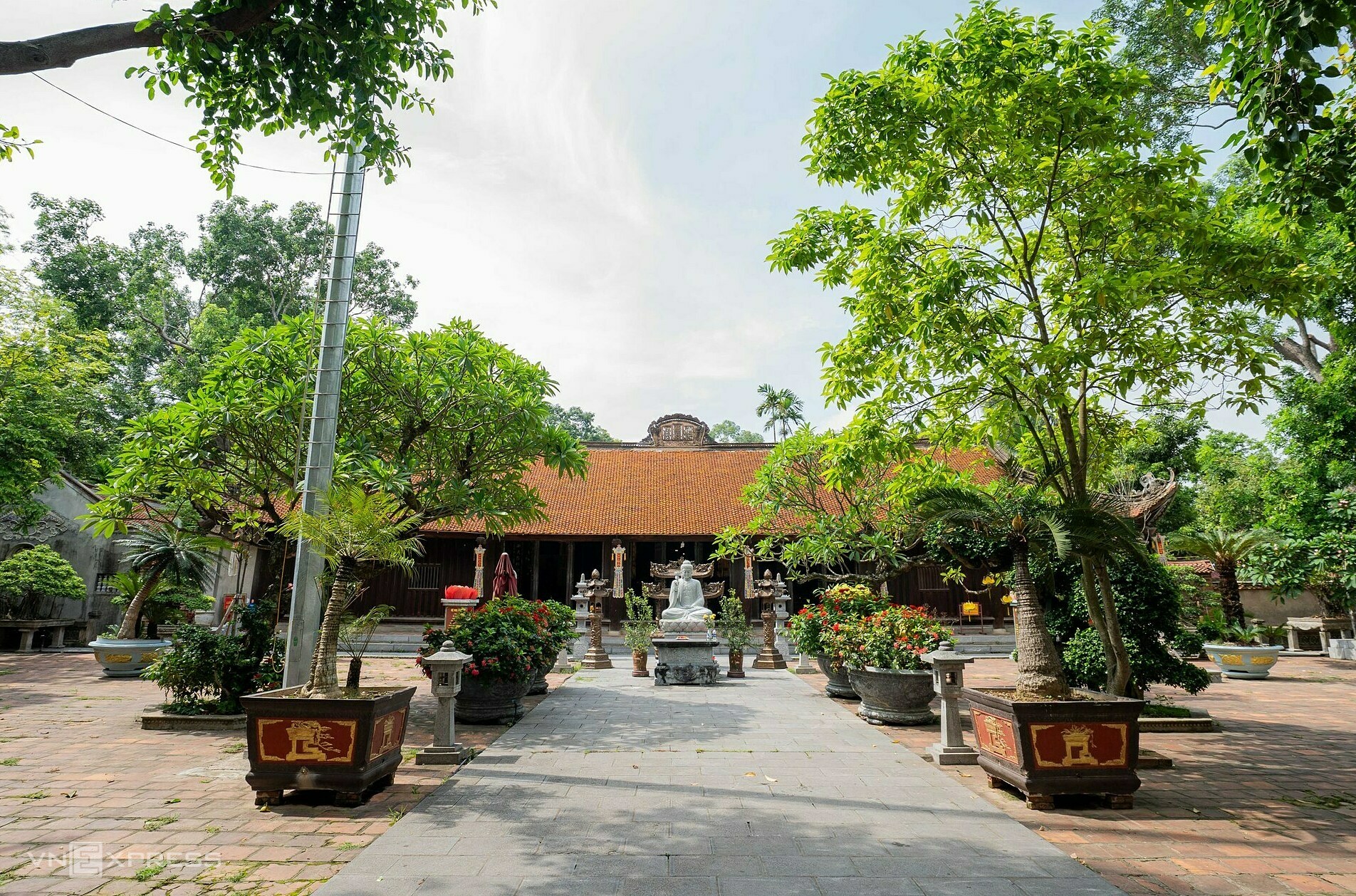 |
Three jackfruit wood statues at the pagoda, dating from the 19th century, hold artistic and historical value and were recognized as national treasures in 2024. |
Vinh Nghiem Pagoda (also known as Duc La Pagoda), located in Quoc Khanh village, Tan An commune, houses over 3,000 woodblocks. These woodblocks, primarily dating from the 17th to the 19th centuries, contain Buddhist scriptures, medical texts, and monastic rules. The pagoda is part of the Yen Tu - Vinh Nghiem - Con Son Kiep Bac complex, recognized as a World Heritage site by UNESCO at its 47th session on 12/7.
Serving as a training center for Buddhist monks for nearly eight centuries during the formation and development of the Truc Lam Yen Tu Buddhist sect, Vinh Nghiem Pagoda boasts a diverse collection of artifacts. These include a system of over 100 statues, horizontal lacquered boards and parallel sentences, a collection of woodblock-printed Buddhist scriptures, and eight steles chronicling the historical development of the Vinh Nghiem Buddhist Center.
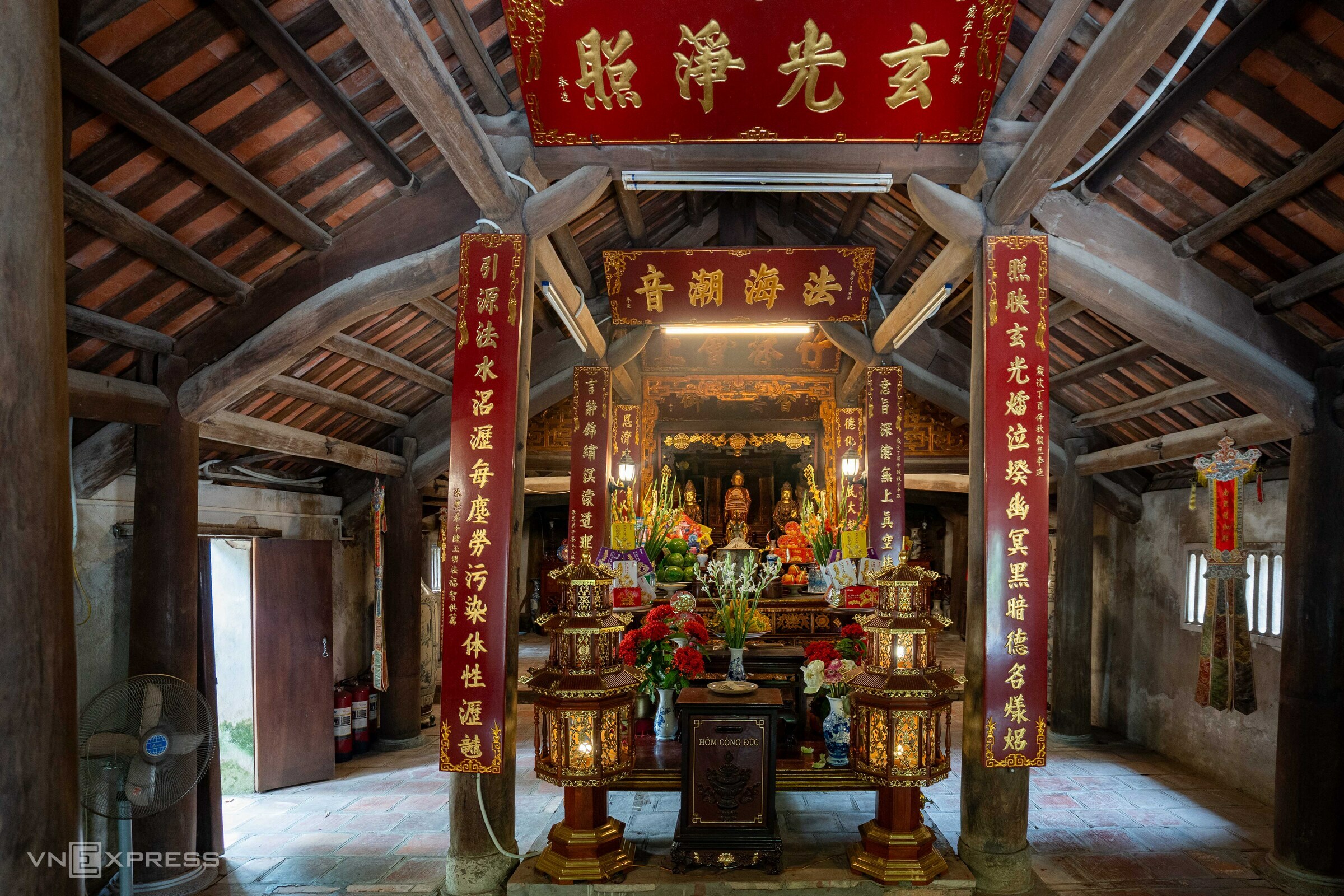 |
The repository also displays many ancient tiles dating from the 6th to the 15th centuries, discovered during excavations in 2015. |
Situated on approximately one hectare of land, the pagoda is laid out along a main axis oriented towards the southeast. It comprises four main structures: the Thien Duong building, the Thuong Dien building, the First Founder's house, the bell tower, the Second Founder's house, along with several auxiliary structures.
The pagoda venerates three patriarchs: the First Patriarch, King Tran Nhan Tong; the Second Patriarch, Phap Loa; and the Third Patriarch, Huyen Quang. These figures founded, inherited, and developed the Truc Lam Yen Tu Zen sect, contributing to the construction and expansion of Vietnamese Buddhism.
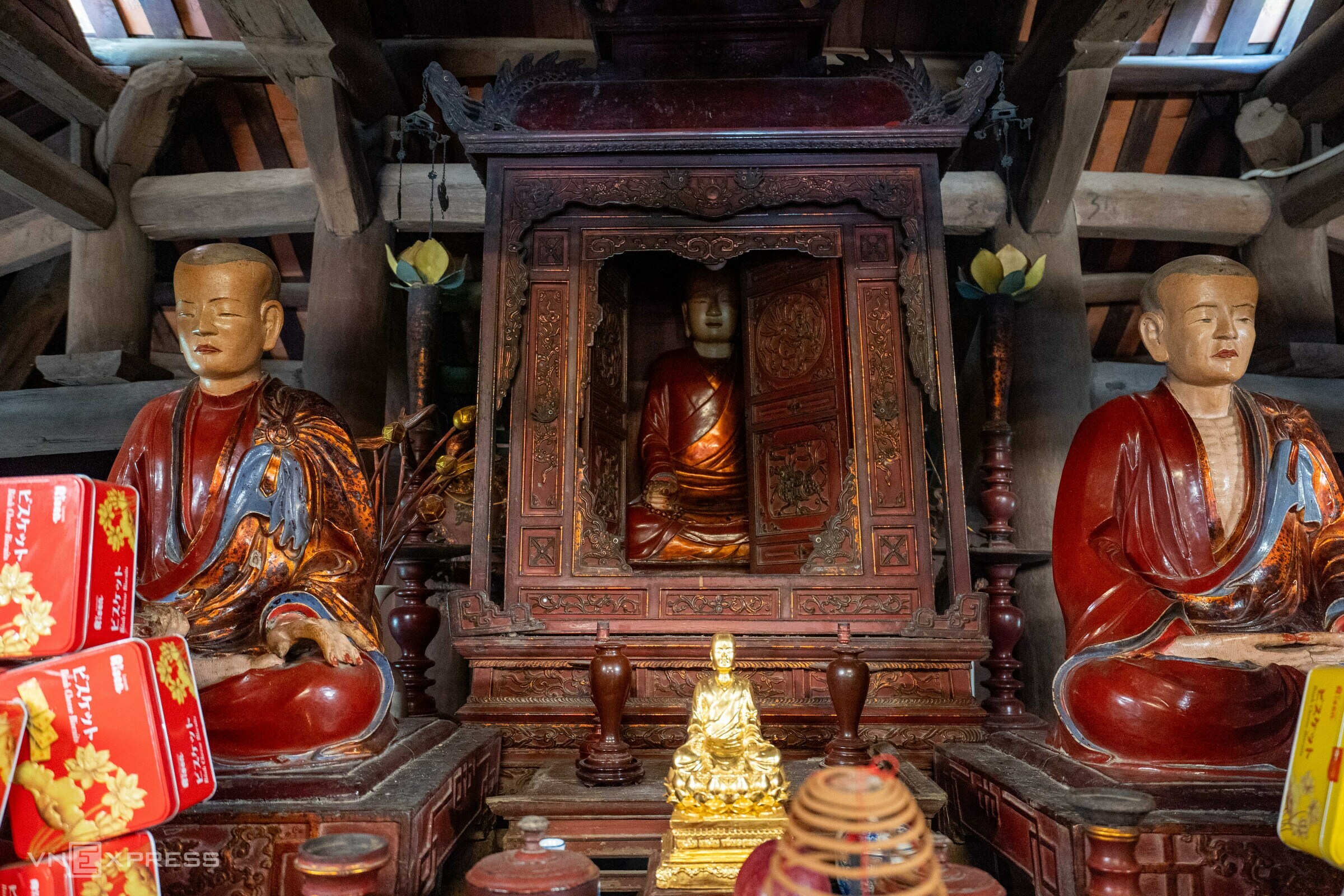 |
The area in front of the Three Patriarchs' altar is planted with various trees, including a Nhap Nhan tree planted in 1330. |
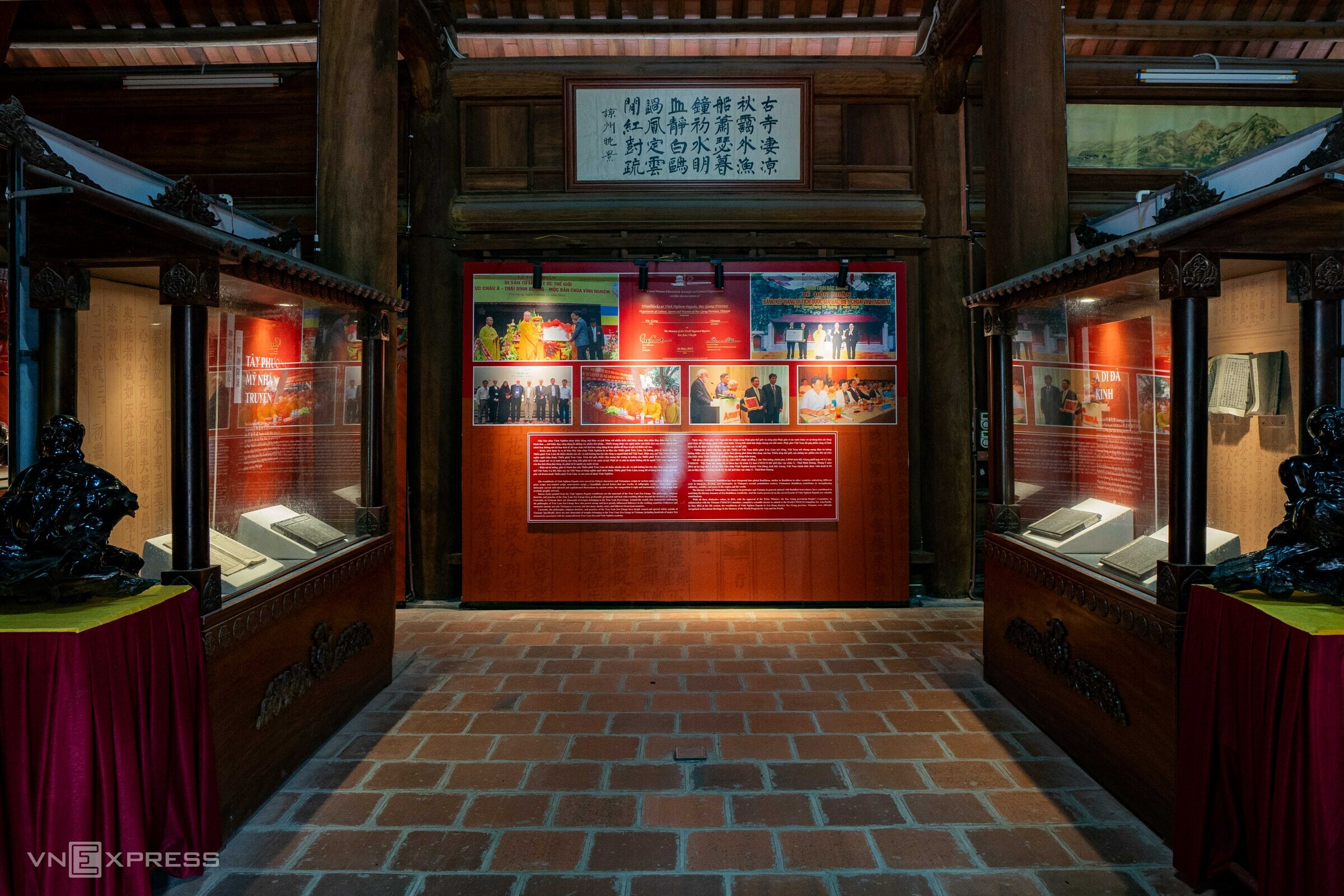 |
Surrounding the stupa garden is an ancient wall built from mountain stone, Bat Trang bricks, and rammed earth, creating a serene and tranquil atmosphere conducive to monastic life, remembrance, and meditation. |
The woodblock repository at Vinh Nghiem Pagoda was constructed to preserve over 3,000 precious woodblocks of the Truc Lam Zen lineage. The building includes exhibition and storage areas, sturdily built with wood and designed to prevent moisture and termite damage. Previously, the woodblocks were kept in the Tam Bao house and the pagoda's corridors, vulnerable to termites, mold, and a lack of specialized preservation.
Among these is the Kinh Tin Luc woodblock, carved in 1876 in Chinese characters. It comprises numerous Taoist works, with a smaller number of Confucian and Buddhist texts. The book's content encourages virtuous deeds, condemns evil, and imparts life skills in a compelling manner. In addition to moral teachings, the end of the book includes some folk remedies.
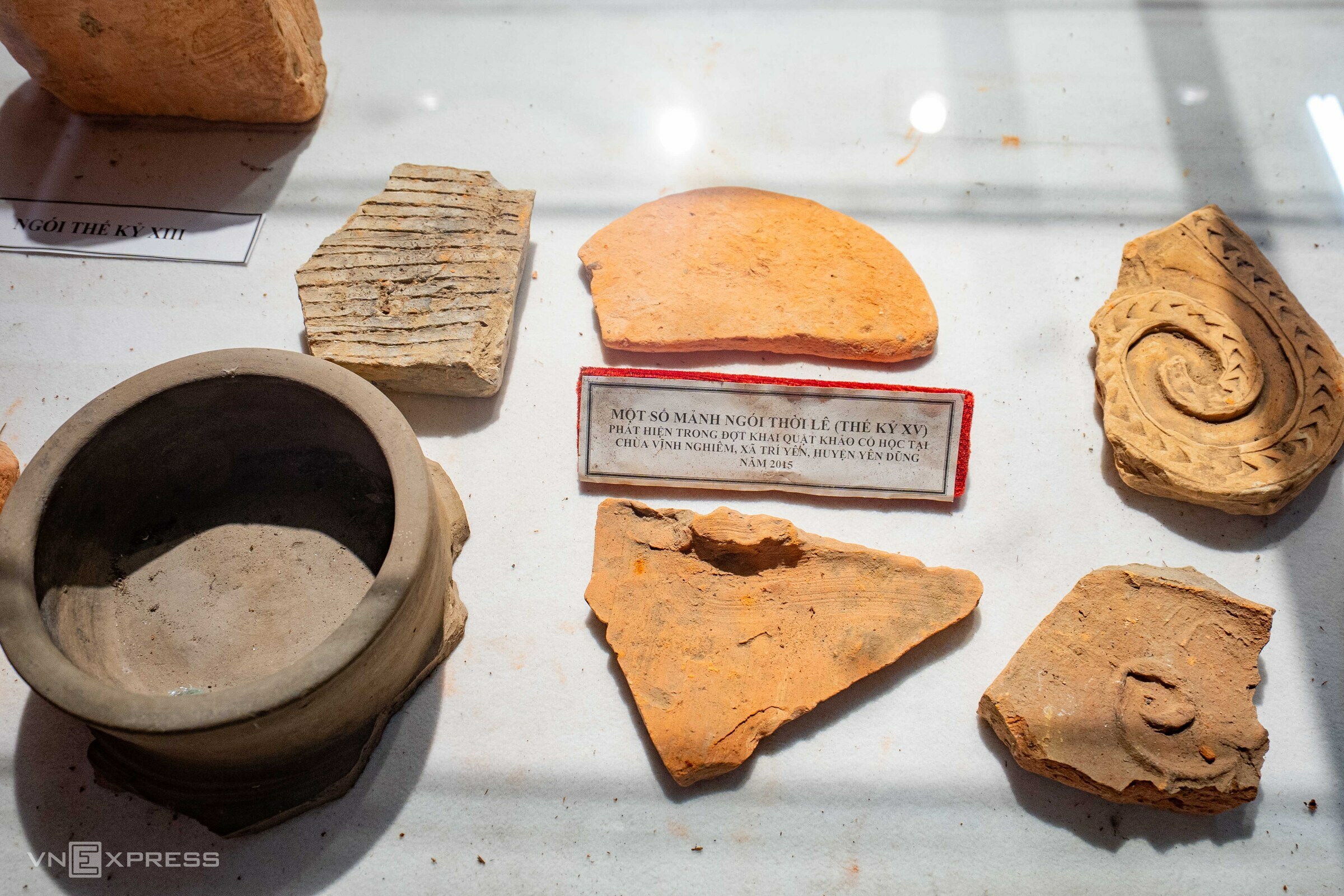 |
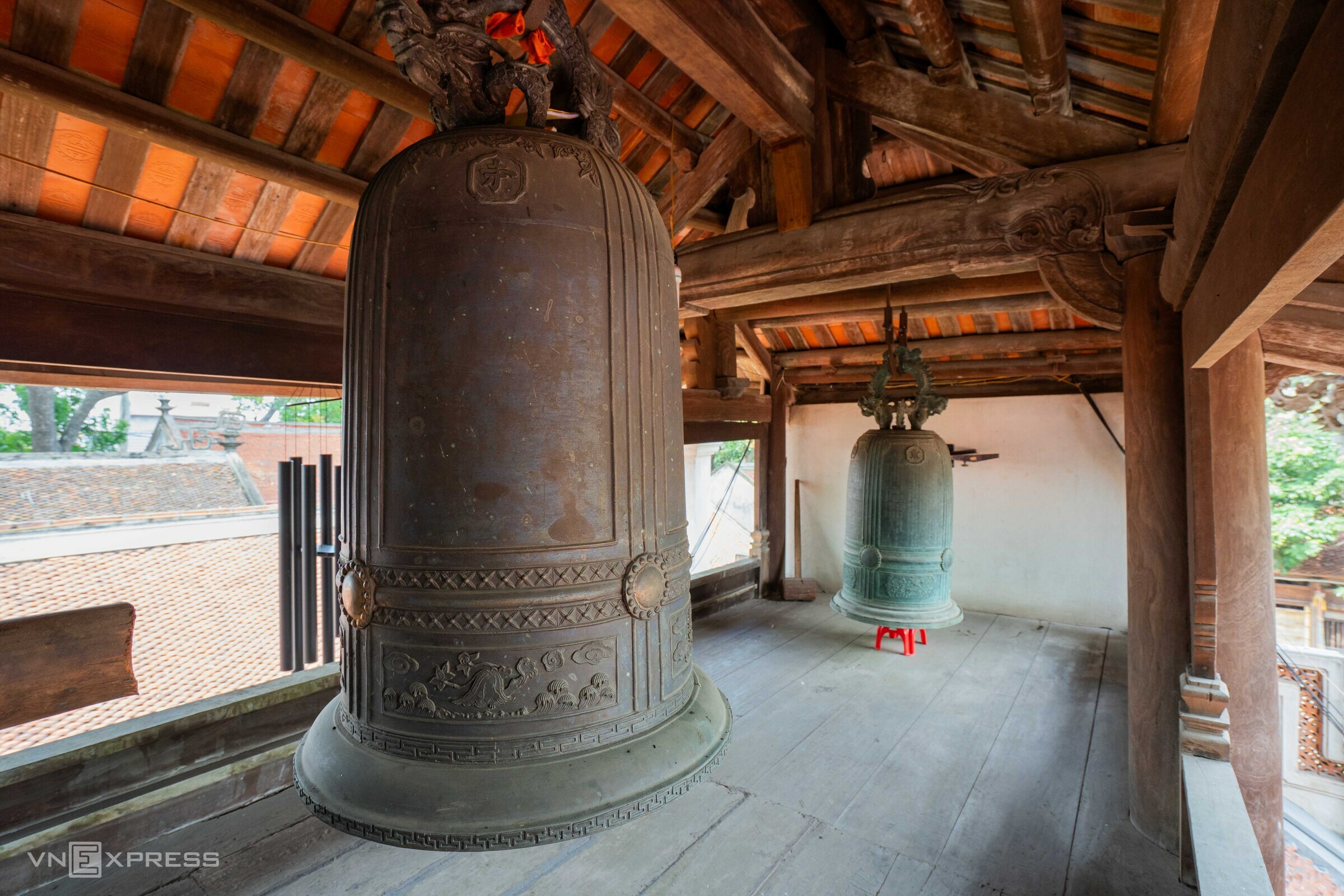 |
The bell tower of Vinh Nghiem Pagoda, standing nearly 8 meters tall, has two stories and a six-tiered roof. It is located along the central axis between the First Founder's house and the Second Founder's house.
The upper story has a wooden floor and houses a large bell cast in the early 19th century. The lower story serves as a reception area, featuring an intricately carved ironwood frame in the Nguyen Dynasty style, creating a harmonious and aesthetically pleasing architectural element.
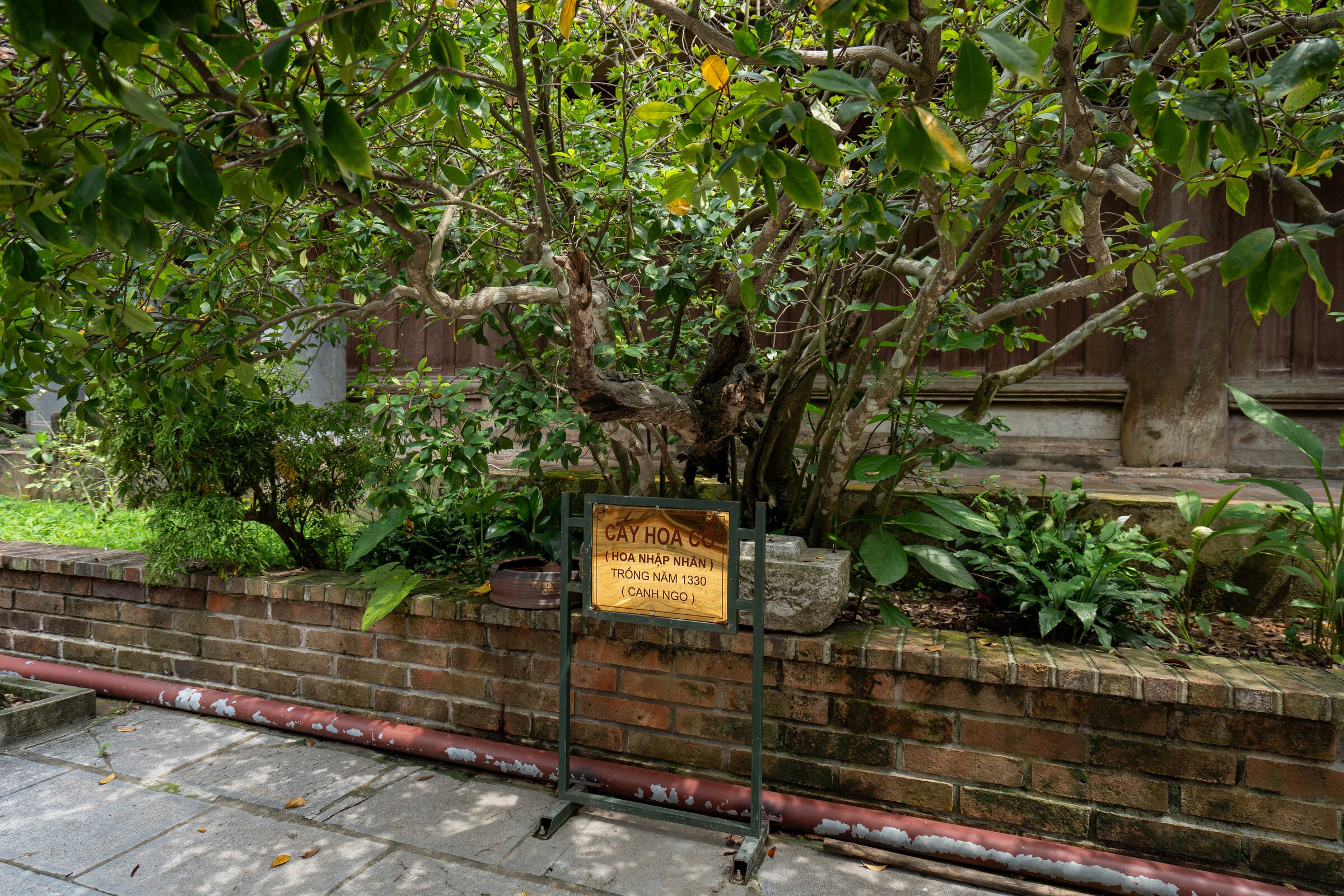 |
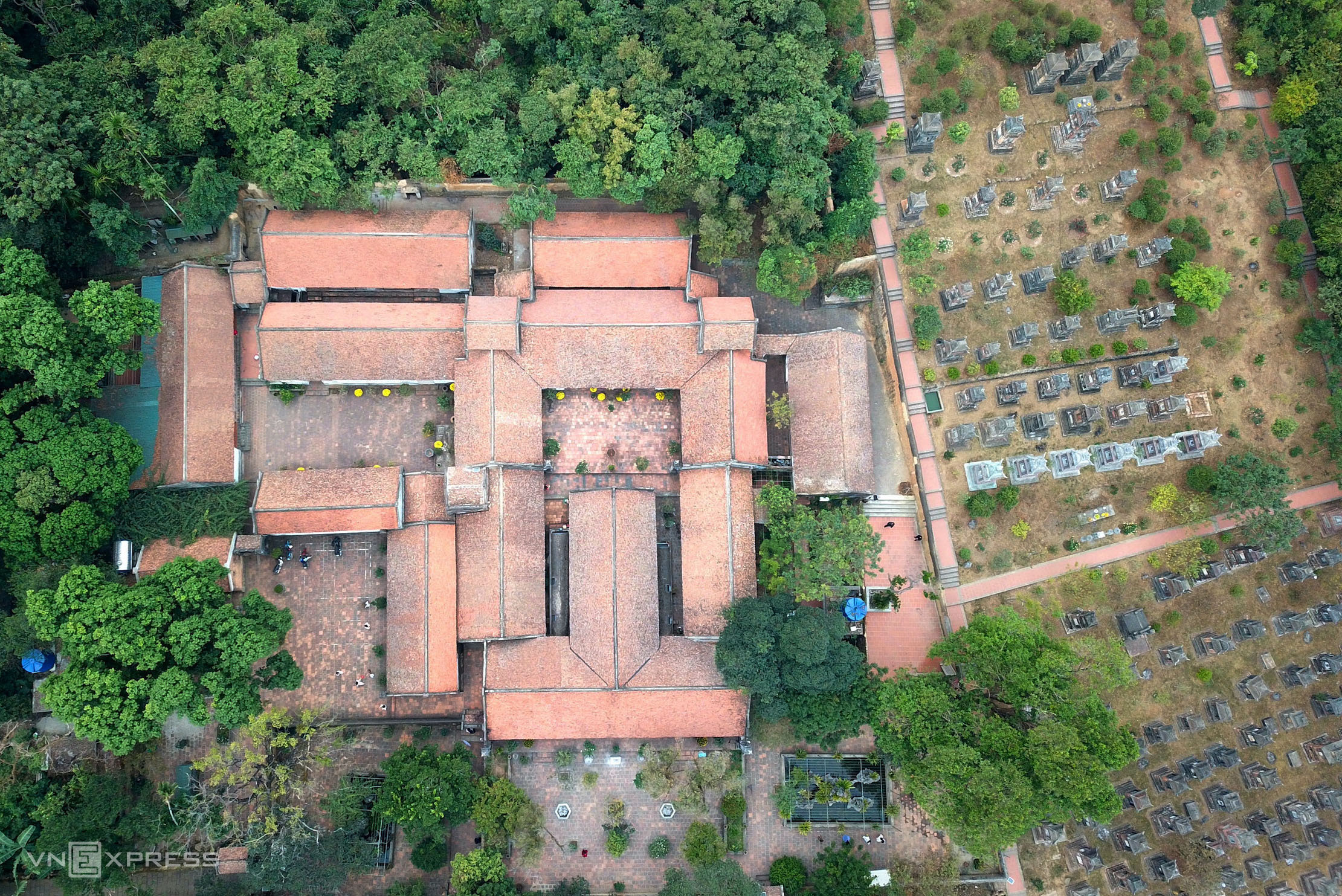 |
Located 40 km from Vinh Nghiem Pagoda, Bo Da Pagoda, nestled on Phuong Hoang Mountain (Bo Da Son) in Van Ha ward, Bac Ninh province, is one of the oldest and most unique pagodas in the Kinh Bac region.
Bo Da Pagoda was built around the 11th century during the Ly Dynasty and underwent several major renovations during the Later Le Dynasty. Photo: Gia Chinh
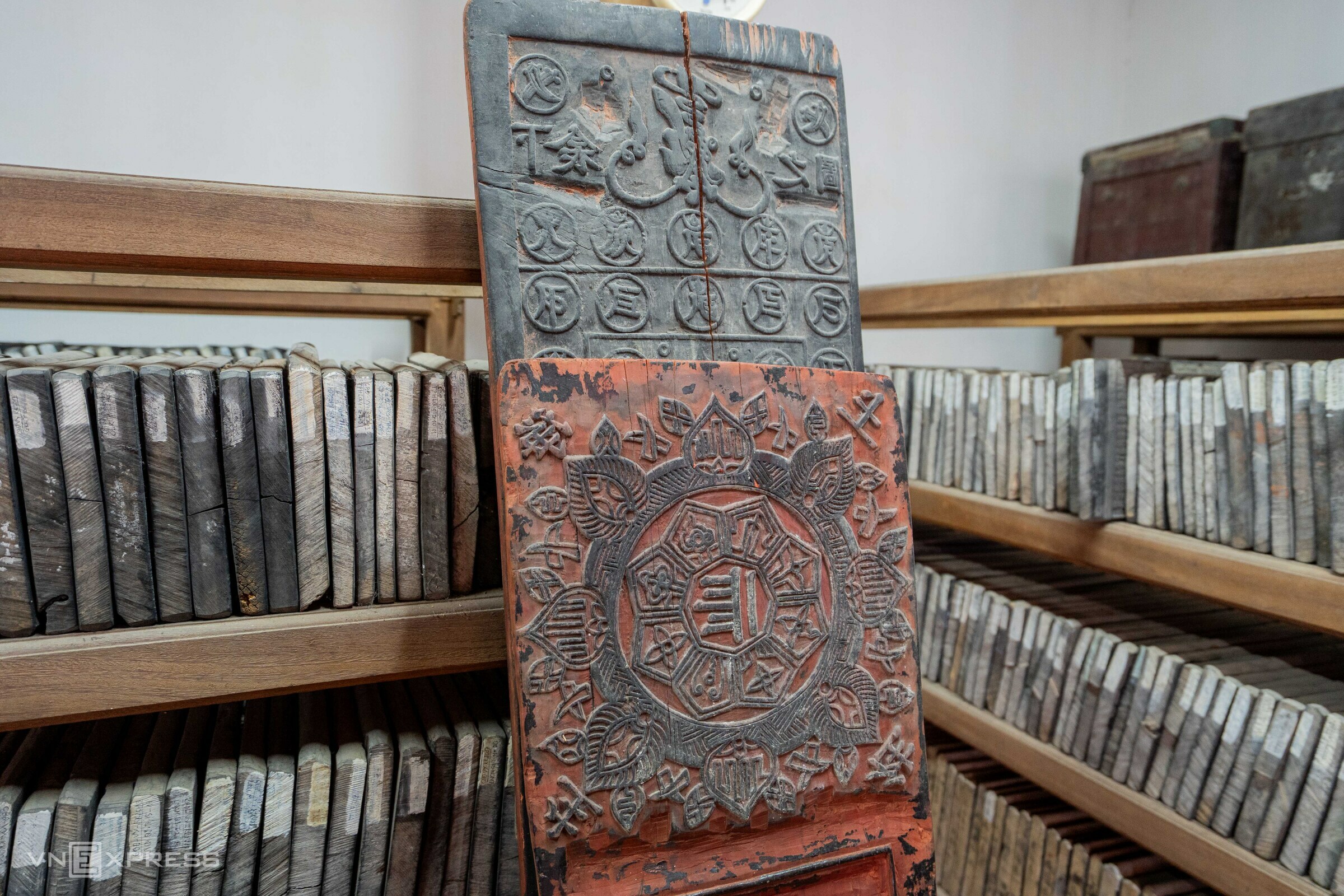 |
The Bo Da Pagoda woodblocks constitute one of the oldest and most valuable collections of ancient Buddhist scripture woodblocks in Vietnam. With nearly 2,000 Diospyros decandra woodblocks dating from the mid-18th to the early 20th centuries, most were carved during the reign of King Le Canh Hung (1740-1786).
These woodblocks are well-preserved, remaining sharp after nearly 300 years, free from termite damage due to the unique Diospyros decandra wood used for carving and the absence of chemical preservatives. The storage room is equipped with temperature and humidity monitors to control the environment.
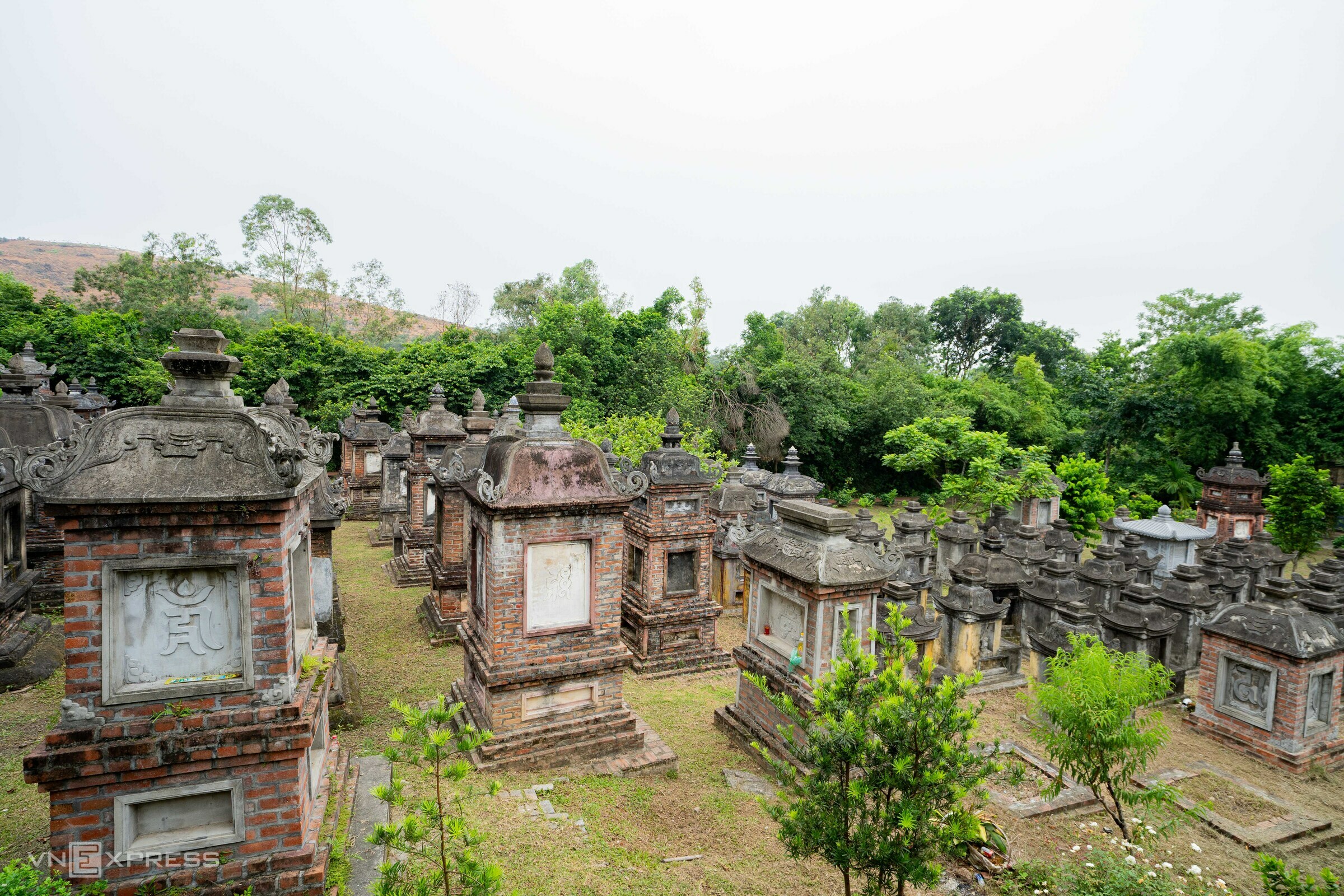 |
The stupa garden of Bo Da Pagoda, situated on the slopes of Phuong Hoang Mountain, covers an area of nearly 8,000 m2 and is considered the largest and most beautiful ancient stupa garden in Vietnam. It contains around 110 stupas and tombs of various sizes, including 97 ancient stupas, centuries old, holding the cremated remains of over 1,200 monks and nuns of the Lam Te Zen sect from across the country.
Most of the stupas and tombs in the garden are three or four stories tall, ranging from three to five meters in height. The stupa of the patriarch is larger and more imposing. These stupas are constructed from Bat Trang bricks, mountain stones, and mortar made from molasses and paper pulp, creating a robust and enduring structure that has withstood the centuries.
The stupa garden was recognized as a National Special Historical-Architectural Relic in 2016.
 |
Hoang Giang












